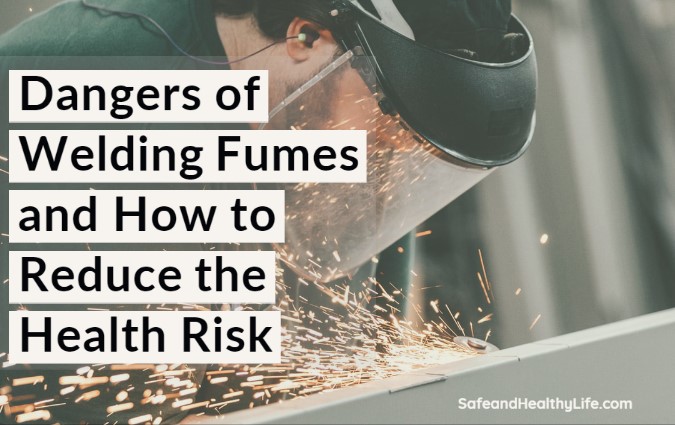
Welding processes create visible smoke which has harmful metal fume and gasoline boilers.
Welding fumes include a number of metals, such as aluminum, arsenic, beryllium, lead, and manganese.
Argon, nitrogen, carbon dioxide, carbon dioxide, and hydrogen peroxide gases often are generated during welding.
Health problems
Welding fumes may lead to significant health problems for employees if inhaled, in accordance with OSHA. Short-term exposure could lead to nausea, dizziness, or eye, nose, and throat discomfort.
Prolonged exposure to welding fumes can lead to cancer of the lung, larynx, and urinary tract, as well as the nervous system and kidney damage, in addition to the nervous system and kidney impairment.
Many people from the welding sector follow the overall welding security basics, like wearing the best clothing along with also a good welding helmet.
Make sure to get all the basic tools to ensure safety, you can refer to this site which lists guides and tools on welding.
However, it would seem that a few of the welding fumes guidelines determined by the OSHA might have been discounted.
It can be tough to evaluate the threat levels of gases since these gases are imperceptible. So we have highlighted some of the risks brought on by welding fumes and also a few of the ways that you may decrease your vulnerability to them.
| Read also: 5 Ways to Improving Health and Safety in Small Businesses |
Health Effects of Breathing Welding Fumes
The OSHA requires all companies to provide sufficient training for employees that are coping with hazardous substances.
The principal threat in welding fumes is an extremely poisonous fume named Hexavalent Chromium, which can be generated when welding stainless steel and other nonferrous metals.
Sudden vulnerability to welding fumes may lead to eye irritation and nausea. Extended exposure might lead to cancer, stomach ulcers, and other ailments.
Preventing and Reducing the risks of welding fumes
You have to create all the necessary steps to remove any vulnerability of your self and other people to welding fumes. Various substances and procedures have various dangers, so prepare yourself and any person with the proper advice characterized by OSHA’s Hazard Communication Standard.
Whilst Flux Cored Arc Welding (FCAW) generates the greatest levels of gases, but this may change based upon the workpiece and the gear utilized.
- The work area where you are welding has to be ventilated with fresh air to help decrease the degrees of fumes. If you’re in a restricted space that’s not ventilated subsequently it isn’t safe to weld. The stream of air, either natural or forced, is vital for welding, and ventilation outside doesn’t absolutely guarantee ventilation.
- There is a range of various approaches that you can efficiently ventilate a room like a fume extractor, a mobile vacuum extraction apparatus, extraction fans, downdraft tables, and much more. The very best thing is to get in touch with your fume control manufacturer and determine which alternative is ideal for your particular working environment.
- Any venting systems which you have set up for the removal of fumes must ideally be as near as possible to the origin of the fumes to be sure the utmost elimination of harmful materials. Additionally, ensure that the ventilation exhaust has been emitted into a secure location.
Reading the OSHA regulations and investing in certain successful ventilation may look to be a chore, but we could be more happy welding it when we follow processes to make sure that fumes do not cause us any illness or handicap.
OSHA offers tips to assist welders to lower their exposure amount to welding gases and fumes. One of them:
- Thoroughly know the dangers associated with welding.
- Sterile welding surfaces often to remove coatings which may potentially lead to hazardous exposure levels.
- Stay upwind of welding fumes when working in receptive or outside places. Take note, however, that operating outside or in open function surroundings does not guarantee secure venting. Make sure you keep exhaust vents from other employees.
- Never weld at a confined area that does not have venting.
About The Author:
Eddy is the main author and owner of the website bestweldinggears.com. He is also proficient in writing content for other publishers and contribute to vast topics. He loves reading books, playing football in his leisure time.




